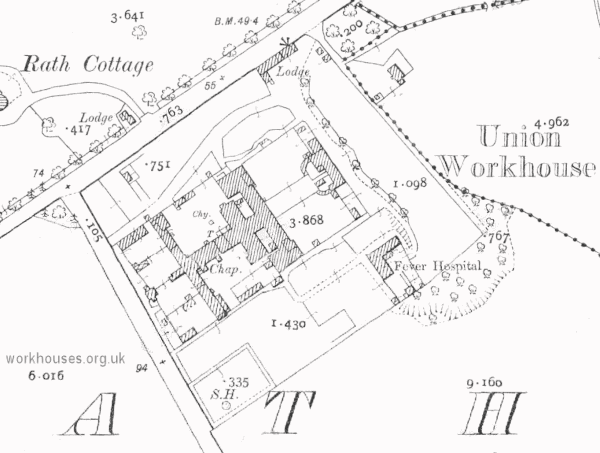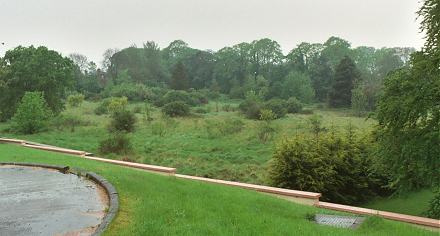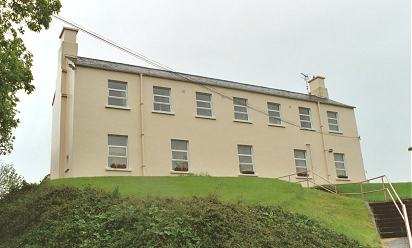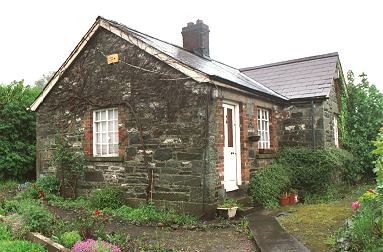Dundalk, Co. Louth
Dundalk Poor Law Union was formally declared on the 18th June 1839 and covered an area of 163 square miles. Its operation was overseen by an elected Board of Guardians, 30 in number, representing its 19 electoral divisions as listed below (figures in brackets indicate numbers of Guardians if more than one):
Co. Louth:
Ballymascanlan (2), Barronstown, Carlingford (3), Casterling, Castletown, Upper Creggan, Darver, Dromiskin, Drummullagh, Dundalk (7), Foughart, Haggardstown, Jenkinstown, Killany (2), Louth (2), Rathcorr, Ravensdale.
Co. Armagh:
Lower Creggan.
Co. Monaghan:
Inniskeen.
The Board also included 10 ex-officio Guardians, making a total of 40. The Guardians met each week on Monday at 11am.
The population falling within the Union at the 1831 census had been 63,911 with Divisions ranging in size from Ravensdale (population 1,654) to Dundalk itself (13,288).
The new Dundalk Union workhouse was erected on an eight-acre site on Ardee Road, a mile to the south-west of Dundalk. Designed by the Poor Law Commissioners' architect George Wilkinson, the building was based on one of his standard designs to accommodate 800 inmates. Its construction cost £5,690 plus £1,387 for fittings etc. The site location and layout are shown on the 1911 map below.

Dundalk workhouse site, 1911.
The workhouse was declared fit for the reception of paupers on 1st March, 1842, and received its first admissions on 14th March.
During the famine in the mid 1840s, a 48-bed fever hospital was erected in an elevated position at the south-east of the main building. School rooms were converted into day rooms and sleeping galleries were erected to accommodate an extra 120 inmates.
The surviving remains of main workhouse building were finally demolished in 1987 although traces of brickwork can be found amongst the now grass-covered site.

Dundalk former workhouse site from the south-east, 2002
© Peter Higginbotham.
The fever hospital which dates from around 1847 survives.

Dundalk former fever hospital from the north, 2002
© Peter Higginbotham.
A porter's lodge of unknown date still stands at the northern entrance to the site.

Dundalk entrance lodge from the north-east, 2002
© Peter Higginbotham.
After the creation of the Irish Free State in 1921, Boards of Guardians were abolished and workhouse premises redesignated for other purposes. The Dundalk site was initially redesignated as a District hospital, but with some wards allocated to welfare cases that would normally be housed in a dedicated County Home establishment. In around 1934, whole site became the Dundalk County Home, later known as St Oliver Plunkett's geriatric hospital.
The main workhouse buildings were demolished in 1987. The site is now occupied by St John of God Hilltop Services.
Inmates
Records
Note: many repositories impose a closure period of up to 100 years for records identifying individuals. Before travelling a long distance, always check that the records you want to consult will be available.
- Louth County Archives Service, Old Gaol, Ardee Road, Dundalk, County Louth. Holdings include Guardians' minutes (1839-1924); etc.
Bibliography
Links
- None.
Unless otherwise indicated, this page () is copyright Peter Higginbotham. Contents may not be reproduced without permission.


